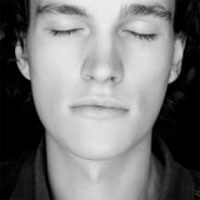As his mother was a painter and his father was a dress designer, in his childhood Oleg Dou used to gather with the artists and to spend a lot of time reading is father’s fashion magazines. At the age of 13, his parents offered him his first computer set up with an old version of Photoshop with which he already began to transform his schoolfriends or teachers faces. After studying design, he worked as a web designer. In 2005, he buys his first professional camera.
Discovered in 2006 by Liza Fetissova, Oleg Dou is represented today by galleries in France, Belgium, Netherlands, Spain, Russia and United States. His worked has been published in a lot of international reviews. He is one of the most promising artist of his generation. In 2011, the Artprice company, leader of the information on art value, has graded Oleg Dou in the top 3 of the under 30 years old photographers the best saled in public auctions. One of his images will make the cover of an extensive " Frozen Dream, contemporary art from Russia" book, from TransGlobe Publishing and Thames & Hudson. Oleg Dou lives and works in Moscow.
From Art and Haze
Oleg Dou grew up in an artistic environment, with a mother and a father as artists. With 13 years, the young man gets a computer with Photoshop. He then begins to transform photographs, especially the faces of his classmates and teachers. After studying design in 2005 he bought his first professional camera. In a very short time, the artist attracted professionals from the world of art and collectors with a specific and recognizable universe. It is also noticed in 2006 by Liza Festissova, gallery to the Russian Tea Room. Between 2007 and 2008, he won the 1st prize of the International Photography Awards with his Toy Story series, doing portraits of children with extreme whiteness and exposed during the FIAC in 2008. Represented by galleries around the world, Oleg Dou is surely one of the most promising young Russian artists . In 2011, the company information on the art market on Artprice ranks him as one of the top three photographers under 30. “A game,” said Oleg Dou, 28, while summarizing his new exhibition titled “Another Face”. Very comfortable, this Muscovite in silhouette – editing pictures with a software to sublimate his thoughts. And these faces cover a multitude of dressings graceful as a plastic surgeon on acid looking for indulgence. These digital collages, quite confusing when watched closely, causing some embarrassment.
Source: RTR Gallery
